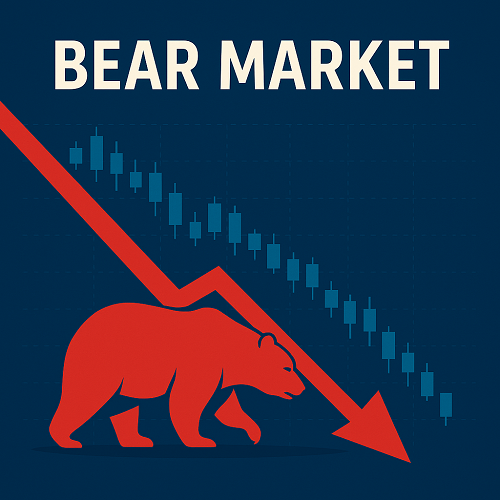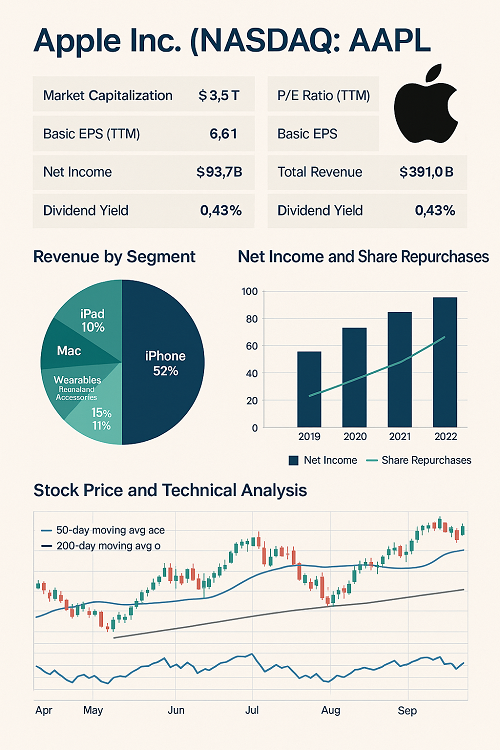In the world of trading and investing, downturns are inevitable. A “bear market” — broadly defined as a sustained period of falling asset prices and deteriorating investor sentiment — represents both risk and opportunity. Whether you’re trading equities, forex, commodities or crypto, understanding the dynamics of a bearish market can make the difference between preserving capital and getting caught off-guard. In this guide you’ll learn what constitutes a bear market, how they evolve, why they occur, and how to tactically navigate them.
What Constitutes a Bear Market?
Traditionally, many define a bear market as a decline of 20% or more from a prior high in a major index. Yet this number is arbitrary — in reality, a bear market is as much about investor psychology and the macro-environment as about a benchmark percentage. A more nuanced view:
- A bear market is when risk-off sentiment dominates, with falling prices, rising volatility and widespread pessimism.
- It may affect a single asset class (e.g., equities) or span many (stocks + crypto + commodities).
- Duration can vary tremendously — from a few weeks to many years (in secular bear phases).
For traders especially in forex and crypto, the concept also translates into trending down-markets, major structural breaks and sentiment-driven reversals.
Key Causes and Macro Drivers of Bear Markets
Bear markets rarely happen in isolation — they are usually the result of interplay between fundamental, technical and psychological forces. Some of the most common drivers:
- Economic slowdown or recession — weak GDP growth, falling earnings, rising unemployment.
- Monetary policy tightening & rising interest rates — makes equity valuations less attractive and raises cost of capital.
- Geopolitical shocks / external crises — wars, pandemics, supply-chain breakdowns can spook markets.
- Inflationary pressures — erode purchasing power and force central banks to act.
- Valuation excesses and market bubbles bursting — when expectations outrun fundamentals, correction can morph into a bear market.
- Market sentiment and psychology — fear, panic selling, herding behaviour often accelerate declines beyond fundamentals.
For forex traders, bear-market-type conditions often emerge when a major currency loses reserve status, suffers from structural imbalance or when a broader risk-off cycle sees flows into safe-havens. In crypto, the amplification effect via leverage and derivatives can turn typical corrections into deep bear regimes.
The Anatomy of a Bear Market
Understanding the structure of a bear market helps traders recognise where we may be in the cycle and adjust accordingly. Many bear markets follow a rough four-phase progression:
- Late bullish / distribution phase – High valuations, strong optimism; smart money begins to exit or hedge.
- Panic/decline phase – Sharp drops, wide participation, increasing fear, clear signs of corporate stress.
- Oversold & trading range phase – Some recovery attempts occur; speculators re-enter; volatility spikes.
- Capitulation & base-building phase – Declines slow, bottom forms; early opportunistic buying begins; eventually a transition to a new bullish phase.
Traders should note: the typical “20% down” marker is simplistic. The true calls often come from sentiment indicators, liquidity flows, breadth deterioration and technical breakdowns.
Historical Bear Markets – Selected Examples
Equities:
- The Global Financial Crisis (2007-2009): The US market dropped over 50% during a roughly 17-month period.
- The COVID‑19 Crash (Feb-Mar 2020): A rapid bear triggered by the pandemic saw the S&P 500 lose ~34% from peak to trough.
Crypto: - The 2018 crypto winter and the 2022 drawdown in altcoins saw declines of 70-90% from peaks, driven by macro tightening and crypto-specific leverage unwind.
Forex / FX risk-off: - During global risk-off, currencies like the Australian dollar, New Zealand dollar and emerging-market currencies often behave like “bear assets”, depreciating strongly.
Showing multiple asset class cases strengthens the universality of bear-market dynamics.
Bear Markets vs Corrections vs Secular Declines
It’s important to distinguish between these terms:
- Market correction – A relatively short, less severe drop (often 10-20%) in a broader bullish cycle.
- Bear market – Sustained drop, typically 20%+ plus pessimism and structural weakness.
- Secular bear market – Long-term environment (years to decades) where returns are muted and the default is sideways or downward.
For active traders: corrections often offer bounce trading opportunities, while bear markets require more structural awareness, hedging, trend-following or rotation strategies.
How Traders and Investors Can Position
The right strategy depends on time-horizon (short-term trading vs long-term investing), asset class (stocks, forex, crypto), and risk-tolerance. Here are tactical ideas:
Stocks:
- Long-term: Stay diversified, maintain high-quality names, use dollar-cost-averaging into weakness.
- Active/trading: Use put options, inverse ETFs, or short selling if your brokerage allows.
Forex: - In risk-off cycle: Rotate into safe-haven currencies (e.g., USD, JPY, CHF), avoid highly-leveraged pairs.
- Use technical levels and volatility expansion (ATR) to identify breakdowns or trend reversals.
Crypto: - Limit leverage, hedge portion of portfolio with stable-coins or short-like instruments.
- Watch network fundamentals (active addresses, hash rate, liquidity) for turning points.
Alternative instruments / hedges: - Inverse ETFs (e.g., for major indices) can amplify inverse correlation.
- Options strategies: buying puts for downside protection, or selling covered calls to generate income while holding.
- Diversification into non-correlated assets (gold, real-estate, infrastructure, private markets).
Across all: Maintain strict risk management (stop-loss, position sizing, liquidity readiness). More than 20% drawdown can threaten the viability of longer-term portfolios.
Risk Management and Portfolio Resilience
In a bear market, preservation often matters more than performance. Here are concrete steps:
- Set clear exit rules and adhere to them.
- Avoid the “hope” trap: don’t hold losing trades waiting for a bounce that might not come.
- Maintain an emergency-fund buffer; liquidity is critical when markets seize up.
- Stress-test portfolio: What happens if indices drop 30-50%? Are you comfortable?
- Monitor trailing-stop levels, review leverage exposure (especially in crypto and forex).
- Keep emotion in check. Fear and panic often drive sub-optimal decisions.
Signals of a Turning Point
Identifying the end of a bear market is notoriously difficult, but there are clues:
- Sentiment indicators reach extreme pessimism / capitulation (e.g., VIX spikes, put-call ratios extreme).
- Market breadth improves (more stocks reach new highs, fewer new lows).
- Leading economic indicators and corporate earnings bottom out and begin to improve.
- Technical patterns emerge: double bottoms, head-and-shoulders reversals, break of down-trend lines.
- Risk appetite returns (flows back into equities, high yield, emerging markets).
As a trader with experience in programmatic and operations, you’ll appreciate that timing is less about perfect bottom-picking and more about disciplined entry into early rebound phases or disciplined hedging during decline.
Bear Market Myths and Misconceptions
- Myth: Bear markets always last long. Reality: Some are short and sharp (e.g., Feb-Mar 2020) and can reverse quickly.
- Myth: You must always go short in a bear market. Reality: For many long-term investors, staying invested and looking for bargains is better than attempting to market-time.
- Myth: All sectors fall equally. Reality: Defensive sectors (utilities, staples) often outperform; some niche growth names may still rally if they’re tied to structural innovation.
- Myth: A 20% decline automatically means the worst is done. Reality: The 20% threshold is a heuristic, not a guarantee of bottom.
Conclusion & Key Take-aways
Bear markets are challenging — but they are also natural and recurring parts of the investment cycle. For traders and investors alike, the key is not to fear them but to understand their structure, use strategic positioning, and preserve capital while remaining ready for opportunity.
Key take-aways:
- Don’t rely on arbitrary thresholds only — monitor sentiment, macro drivers and breadth.
- Adjust strategy to your asset class: stocks, forex, crypto all require tailored responses.
- Risk management is paramount — you survive a bear so you can thrive in the next bull.
- Look for structural signals of recovery rather than purely hoping.
- Stay disciplined and avoid emotion-driven decisions.
FAQs
Q1: What is the difference between a bear market and a crash?
A crash is typically a very sharp drop (often within days or weeks), whereas a bear market is a sustained decline that can span months or years, with broader structural issues.
Q2: Are bear markets bad for long-term investors?
Not necessarily — long-term investors who can remain patient may gain entry into quality assets at lower prices. The challenge is staying invested and avoiding panic.
Q3: How often do bear markets occur?
Historically, major indices like the Dow Jones Industrial Average have experienced a bear market roughly every 3 years (based on older data).
Q4: Can bear market strategies work in forex and crypto, too?
Absolutely — while the mechanics differ (for example, crypto lacks established inverse ETFs), traders can still use trend-following, hedging, risk-off flows and structural ratio analysis.
Q5: What is the most important metric to watch during a bear market?
There’s no single “magic” metric. A combination of market breadth, sentiment extremes, earnings trends, liquidity conditions and macro signals gives the best picture.





 XAUT-USD
XAUT-USD  AMD
AMD  MARA
MARA  SHOP
SHOP  BULL
BULL  CL=F
CL=F